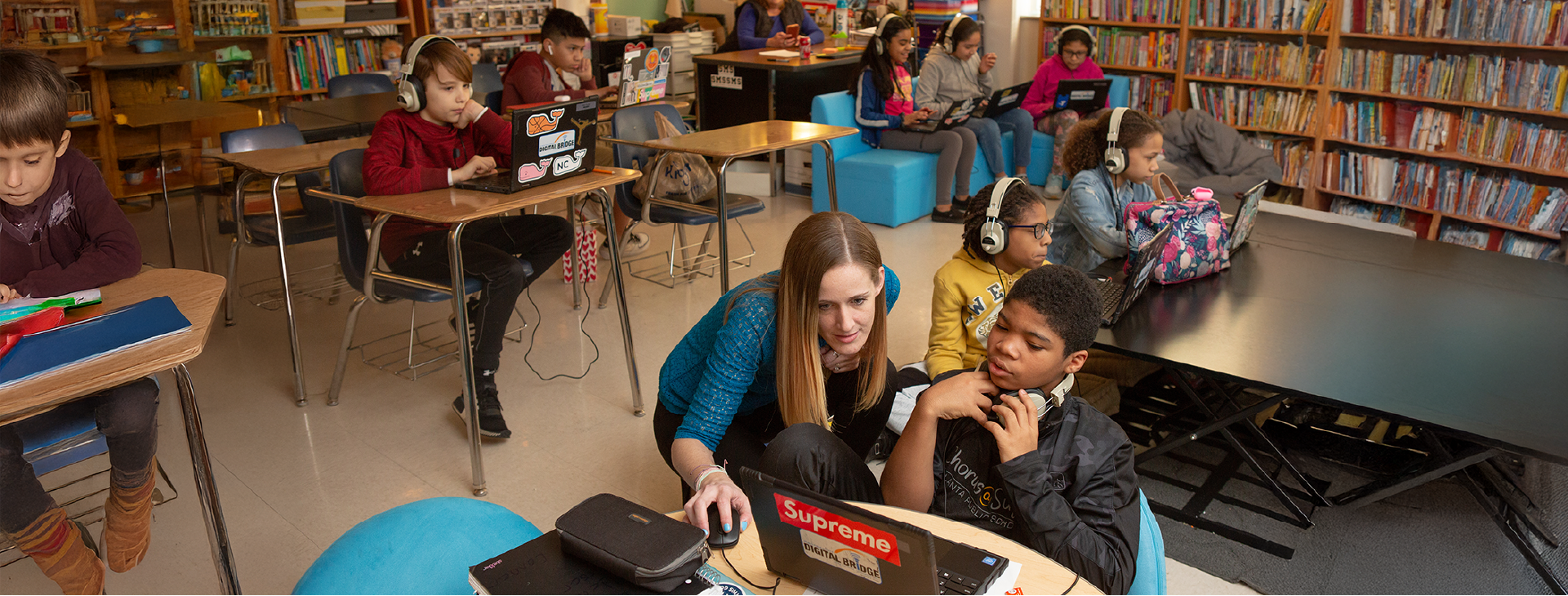
Generative AI and Cara’s Other Favorite Accessibility Things
Oprah has her list. We have ours.
Every year, Oprah releases her list of favorite things. And it got me thinking: Wouldn’t it be great if state technical advisory committees (TACs) did this? Before you dismiss this as too quirky or unconventional, let me explain.
In my first year at the Center, I’ve been working on assessment with a growing number of TACs. Their members have deep expertise in testing and accountability, and in their meetings, they often share their favorite new research articles, methodologies, or tools.
These collaborative exchanges of ideas—and Oprah’s perenially popular list—inspired me to imagine what would happen if all state TAC members built their own lists of favorite tools and innovations. They would be such a rich resource of valuable insights that could spark fresh ideas for improving assessments.
To get things started, I’ve created my own list: Cara’s Favorite Accessibility Things. These tools and innovations have the potential to make a significant impact on educational assessments in 2025 and beyond.
So, without further ado, I present my list.
1. Speech Recognition
Speech recognition technologies have been around for decades, originally developed as assistive tools for people with motor control disabilities. Speech-to-text (STT) began as niche software, like Dragon Naturally Speaking, and evolved over time to become a ubiquitous feature in the operating system of nearly every digital device we use. Many of us now use STT to generate on-the-fly closed captions or summarize meeting notes with tools like Zoom’s AI Companion or Microsoft’s Copilot.
What earns STT a spot on my list this year is the progress being made in the ed tech world to integrate speech-to-text as a core design feature. This includes training the technology to recognize a wide variety of accents and speaking styles, including voices of children who are more likely to stutter or struggle with articulation. For example, Curriculum Associates recently acquired SoapBox Labs, which claims to have a speech recognition technology specifically trained to recognize the unique speech patterns of children.
This focus on STT as a design feature for children is a game-changer in education. By incorporating STT into assessments and ed tech tools, we are making the Universal Design principle of multiple means of response a reality, ensuring that all students—regardless of how they communicate—can show what they know and can do.
2. Generative AI Applications
You may be surprised to see generative AI applications like ChatGPT on a list of favorite accessibility things. But I see it as an assistive technology.
The World Health Organization defines assistive technologies as products that “help maintain or improve an individual’s functioning related to cognition, communication, hearing, mobility, self-care, and vision.” While many people without disabilities (myself included) are using generative AI, it’s hard to argue that this tool doesn’t meet the definition of assistive technology. Generative AI provides a new form of assistive technology for cognition tasks such as pattern recognition, synthesizing and idea generation.
A recent study by the Special Olympics Global Center for Inclusive Education found that many believe artificial intelligence can potentially close education gaps between students with and without intellectual disabilities. In addition, many people without disabilities use assistive technologies in our daily work. Testing organizations and users are thinking deeply about the ethical use of AI or the operational uses in test development. Testing professionals can also use it to generate alt text for visual images, further enhancing accessibility.
3. EdTech Accessibility Rubric
Several organizations develop standards for accessibility (the W3C Web Content Accessibility Guidelines, for example). Recently, one of those organizations,1EdTech, published a rubric that allows purchasers to evaluate accessibility. This tool is a significant step forward in helping states and districts evaluate the accessibility of educational technologies.
The rubric provides a comprehensive framework to ensure that all educational technology, from testing platforms to online textbooks, is inclusive and accessible to all students. With 1EdTech’s rubric, state policymakers could evaluate vendors’ proposals to determine if they are committed to accessibility and if teachers have a way to report accessibility-specific concerns and issues they encounter during testing.
One of the best aspects of the rubric is that it consolidates various accessibility requirements, such as Voluntary Product Accessibility Templates (VPATs), with other criteria, like corporate accessibility statements. By streamlining these considerations, it simplifies the evaluation process for educators and administrators. You can learn more about it through this YouTube video and the official documentation.
4. Decoding Thresholds in Combination with Text-To-Speech
Many college students and adults with vision or reading disabilities, such as dyslexia, can decode and read fluently but still prefer to use audiobooks or text-to-speech tools to consume print. This raises important questions: What level of decoding is necessary to be “college and career ready”? What compensatory skills should be prioritized?
The science of reading movement has brought renewed attention to these questions, particularly regarding when text-to-speech should be allowed. The U.S. Department of Education’s Reading for Understanding initiative funded extensive research on this topic. In 2024, researchers at ETS, where I worked for many years, published a study on “decoding thresholds,” offering a straightforward way for state departments of education and test developers to determine when students with disabilities can transition from learning to read to using assistive technology to read.
5. Assistive Technology Lending Libraries
Many students first encounter assistive technologies, such as text-to-speech tools, during state tests. Unfortunately, schools often report that they buy assistive technology for students but then don’t use it, for a variety of reasons (maybe it doesn’t work with the school’s laptops or is too complicated for students and teachers to learn), and it ends up gathering dust in closets. This means that some students who would benefit from text-to-speech supports don’t use them until they take state tests. What if schools and individuals could try out different assistive technologies to see what works before investing resources? Good news—they can.
In my home state of New Jersey, teachers and parents can check out assistive technology products at our Technology Advocacy Center to determine their usefulness before purchasing. Similar lending libraries exist across the U.S., and a simple Google search for “AT lending library in [state]” can help you find one near you.
6. The Monarch: Full-Page Refreshable Braille Display
Last but not least, with a whopping price tag of $17,600, is the Monarch. This device enables educational publishers and testing platforms to render full-page, refreshable braille in real time. This innovation allows braille readers to interact with dynamic content and adaptive testing formats.
While the price tag is steep, the device is covered by federal quota dollars, making it affordable for school districts. The Monarch represents a significant leap forward in making complex educational content accessible to students who read braille.
So those are my six favorite accessibility things for 2025. I would love to hear from you about what would make your list of “favorite things,” whether it be a new approach to automated scoring, item type, or an accessibility tool I may have missed.
Photo by Allison Shelley for EDUimages
